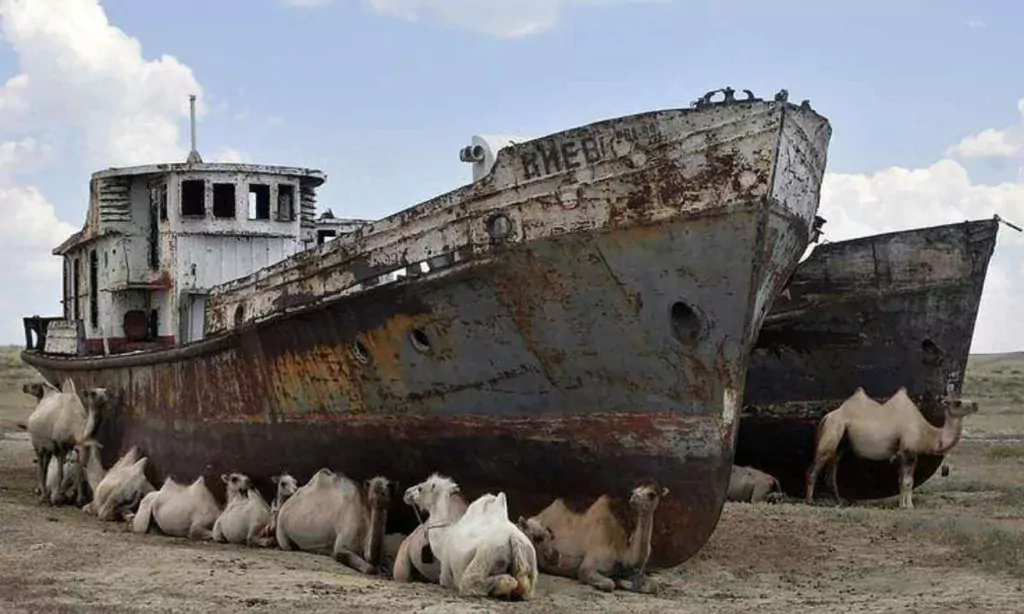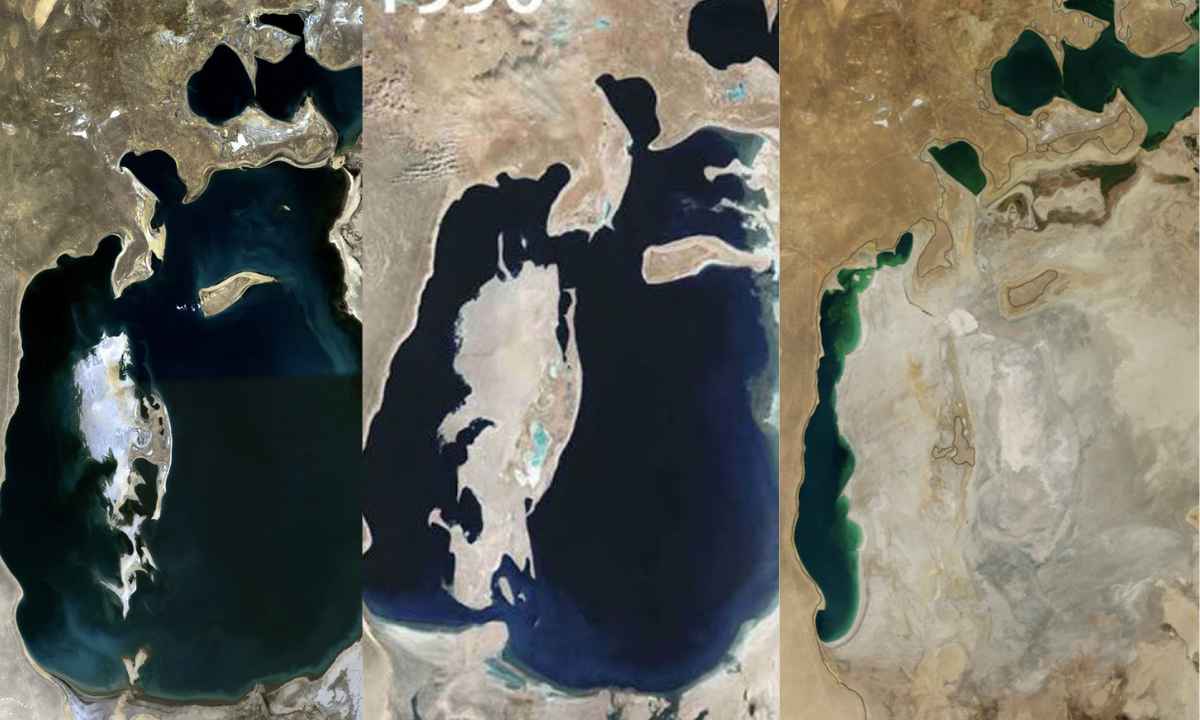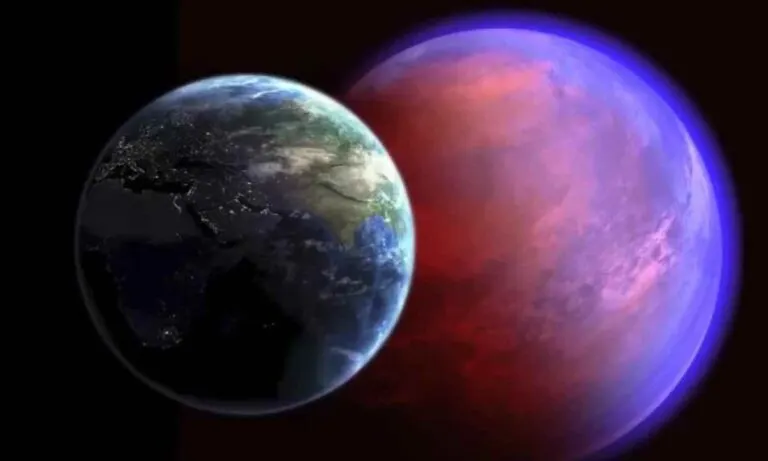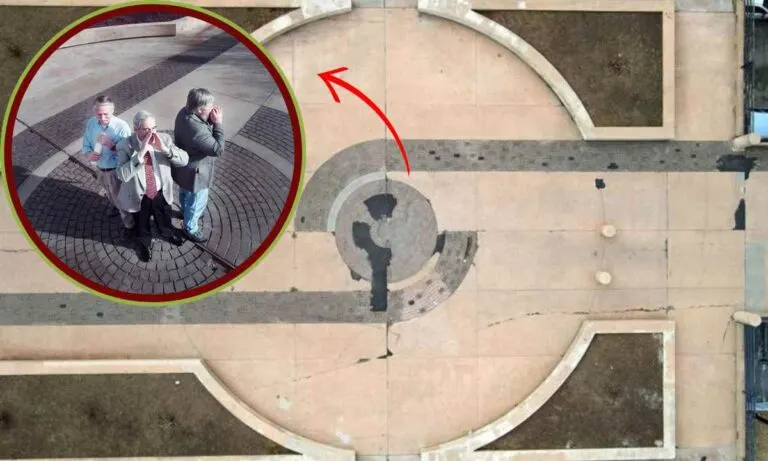World’s Fourth Largest Lake Has Now Disappeared | Result of A Russian Project Gone Wrong!
The world’s fourth-largest lake, critical to the ecosystems and people around it, has now reduced to a fraction of its size. This isn’t the plot of a dystopian novel; it’s the real story of the Aral Sea. But how did this happen? Once spanning over 68,000 km², the Aral Sea has dramatically shrunk due to a Soviet-era irrigation project. The sea has now turned into a desert and the communities are ghost towns. Can anything be done to restore it? And what does life look like around the Aral Sea now? Let’s dive into the details.
The Soviet Vision: A Failed Project for the “White Gold”!
This giant lake is lying between Kazakhstan to its north and Uzbekistan to its south. The name originates from Mongolic and Turkic languages and it translates to “Sea of Islands.” This is a reference to the huge number of islands (over 1,100) that this lake once carried.
In an ambitious bid to become a global cotton powerhouse, the Soviet Union launched a massive project in the 1960s. The project focused on diverting the Aral Sea’s lifelines, the Amu Darya and Syr Darya rivers. They did it to irrigate the desert for cotton cultivation. However, this “white gold” rush did not see success and soon led to its downfall.
Uzbekistan became the world’s largest cotton exporter, leaving the Soviet Union devastated. The sea began to vanish, losing 40% of its area and nearly 60% of its volume.
By 2007, the lake’s size dropped to 10% of its actual size. The lake was then split into four parts as the North Aral Sea, the eastern and western basins (earlier South Aral Sea), and the smaller intermediate Barsakelmes Lake. The southeastern lake vanished in 2009 and the southwestern lake remained as a thin strip at the western edge of the former southern sea. The rare flows of water have kept the southeastern lake filled a little, but not entirely.
NASA revealed Satellite images in August 2014 that showed how the sea had completely dried up for the first time. The eastern basin is now transformed into what is called the Aralkum Desert.

The Polutted Sea and Toxic Dust storms!
The shrinking of the Aral Sea unleashed many environmental disasters. The Aral Sea territory is now heavily polluted and there is a significant threat to public health.
The drying sea has huge plains coated with salt and toxic chemicals. These chemicals are mainly from weapons testing, industrial projects, and pesticides. The entire area lost its biodiversity, toxic dust storms were created and caused severe health problems among local populations.
The once-thriving fishing industry collapsed. People were left to wrestle with unemployment and economic hardship. The landscape drastically changed, impacting the environment and the region’s people.
Efforts to Restore the Aral Sea
However, not all hope is lost. Kazakhstan’s efforts with the Dike Kokaral dam have seen part of the North Aral Sea refill, bringing back some water, and fish. International projects, including Japan’s involvement and proposals to divert water from Siberia, aim to mitigate the loss further. Japan International Cooperation Agency (JICA) is also working on a new project to revive the sea. Japan also allocated a $3 million governmental fund to improve the living means of the communities in the region.

Life on the Aral’s Edge
Despite the adversity, life continues around the remains of the Aral Sea. Small communities, resilient and adaptive, find joy and companionship. New businesses and social activities also breathe life into these areas. International efforts, particularly from Japan, offer a glimmer of hope and support for these communities.

Conclusion
The story of the Aral Sea is a cautionary tale of environmental neglect and the dire consequences of prioritizing short-term gains over long-term sustainability. It teaches us the importance of balanced development and conservation, reminding us that our actions have lasting impacts on our planet. As we reflect on the Aral Sea’s past and future, let’s carry forward the lessons learned to protect and cherish our precious natural wonders.
Also read,







